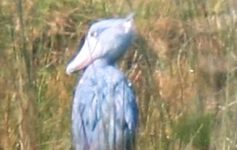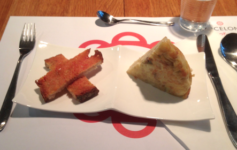This information is for educational purposes only and is reviewed regularly for accuracy. Panonychus ulmi. Egg hatch … If the ratio of N. fallacis to ERM is between 1 to 5 and 1 to 15, biological control is possible. Feeding mites have a dark spot on either side of the body that may enlarge to cover most of the body. However, the species rapidly develops pesticide resistance, and the elucidation of resistance mechanisms for P. ulmi has not kept pace with insects or with the closely related spider mite Tetranychus urticae. Neither of these names is as appropriate as the first one, since it is a mite and not a spider, its original habitat apparently is Europe, and the plum is only one of many food plants. Cold-weather mites include the spruce and southern red spider mites. 1/12 ABSTRACT. Mites tend to build up during periods of hot, dry weather. commitment to diversity. Bio-control: Several beneficial arthropods can help keep ERM and twospotted spider mite populations below damaging levels. European red mite definition is - a small bright red or brownish-red oval Old World mite (Panonychus ulmi) that is a destructive orchard pest. 17.3). Overwintering females are orange and hibernate under bark scales on the tree and in trash on the ground. Within each block, examine 5 leaves from each of 10 trees with a visor lens or hand lens. S. punctum should be sampled by counting the number of adults and larvae observed during a timed 3-minute search around the periphery of mite-infested trees. Extensive leaf bronzing results in decreased photosymthesis, often causing reduced fruit size, premature drop and reduction in fruit set the following year. European red mites can have 6 to 8 generations per year, depending on the temperature. Eggs are red, globular and somewhat flattened with a slender stalk on the upper side. within ambient temperatures of between 25-30˚C and a relative humidity of 60-70%). Severe mite infestations can cause bronzing of leaves, eventually leading to premature leaf abscission. Many die during very cold winters. Resources from UMass Extension and the Center for Agriculture, Food and the Environment: ag.umass.edu/coronavirus, See pdf version link above for illustrated fact sheet. red, but look black, grey or white without host blood in their system (Hoy 2011). Fowl red mites exist almost worldwide, and are particularly present in Europe, the Middle East and Asia. Newly hatched nymphs have three pairs of legs. urticae) and the European fruit tree red spider mite (Panonychus ulmi) are both found damaging UK cherry crops. Both female and male adults have eight legs, but freshly hatched nymphs have only six legs. Two-spotted spider mite (TSSM) adult males are pale yellow, pale to dark green. ERM overwinter as eggs on smaller branches, twigs, and roughened bark of apple trees. References to commercial products or trade names are for the reader’s information. The chicken mite, Dermanyssus gallinae (De Geer) (Fig. Males are slightly smaller, more lightly colored, and have abdomens that are more pointed than curved. Eggs hatch into six-legged larvae, then progress through eight-legged protonymph and deutonymph stages before becoming eight-legged adults. However, expert assistance shoul… Because they skip the pupa stage, their metamorphosis is not a complete one. n. a red to red-brown mite, Panonychus ulmi, with white spots and dorsal spines: a widely distributed pest of fruit trees. Cooperative Extension prohibits discrimination and harassment regardless of age, color, disability, family and marital status, gender identity, national origin, political beliefs, race, religion, sex (including pregnancy), sexual orientation and veteran status. In mid-late summer, TSM migrate into fruit trees and feed on leaf undersides. ERM feed on leaves. https://vetsci.org. Life cycle. Monitor mite populations by examining underside of fruit cluster leaves through May and June. Tetranychus mcdanieli was recorded in Europe in 1981 but is probably currently of minor importance in comparison with the other two. Neoseiulus fallacis feeding on twospotted spider mite. The European red mite has been found in several early apple samples. Females lay roughly one egg per day - if a female has mated, the fertilized eggs develop into both male and female mites; if she has not mated, the unfertilized eggs develop into males. Female spider mites normally lay eggs on the undersides of leaves. Emergence begins at first bud, and the mites disperse, looking for either spider mites or apple rust mites. Indians. Threshold is 1-2 motile (not eggs) mites per leaf or 30% of leaves with one or more mites. Mites like hot, dry weather. Note: This information is for educational purposes only and is reviewed regularly for accuracy. European red mites rarely cause significant damage to grapes prior to mid-summer. It is found in virtually all of the world’s apple production regions and its … It has a high reproductive rate, a short generation time (21 days at 20 °C or 68 °F) and produces many broods in a year, all of which contribute to its pest status. The newly hatched young immediately starts feeding on unfolding leaves by sucking out the juices from the leaves. Monitoring Mite Populations: Use a regular monitoring program to follow the buildup of pest mite populations and to determine if and when supplemental applications of a miticide are necessary to avoid economic damage. Aside from the egg, the chicken mite has four stages in its life cycle: the larva, protonymph, deutonymph, and adult (Figure 3) (Sparagano et al. The larvae stay in their larval cuticle for one or two days and then emerge. Scientific Name. The male ERM is more slender and lighter in color than the female, with a more pointed abdomen. BACKGROUND: The European red mite, Panonychus ulmi, is among the most important mite pests in fruit orchards, where it is controlled primarily by acaricide application. The male mite is more slender and lighter in color than the female, with a more pointed abdomen. This work was supported in part by funding provided by USDA NIFA Extension Implementation Program, Award No. Date: March 2020Author(s): Jaime Piñero, Elizabeth Garofalo, Sonia Schloemann, UMass Extension, Visit our website: http://ag.umass.edu/fruit, Additional information available on the MYIPM app: https://apps.bugwood.org/apps/myipmseries/. Starting in July, examine middle-aged leaves for motile mites. If preventive control measures are not used, a modified threshold level of 1 to 2 mites per leaf should dictate the need for miticides. Do not use oil within 24-48 hours before freezing temperatures, or if temperature is below 35F following a freeze. ERM overwinter as eggs on smaller branches, twigs, and roughened bark of apple trees. The life cycle of tarsonemid mites has the following stages: egg, larva, and adult. Oils can be safely applied up to the pink stage. Usually ERM populations build up slowly during the spring, increasing to unacceptably high levels only if summer conditions are favorably hot and dry. NC State University and NC ALWAYS READ AND FOLLOW LABEL DIRECTIONS FOR SAFE USE OF ANY PESTICIDE. The earlier that foliage is injured (i.e., May or early June), the more detrimental the damage will be to tree health. European red mite (Panonychus ulmi; ERM) is found on fruit trees, shade trees, and shrubs worldwide. Fig. Overwintering eggs are round, bright red, and have a small stalk, approximately the length of the diameter of the egg, arising from the top. Overwintering ERM eggs begin hatching right before bloom. References to commercial products or trade names are for the reader’s information. 2014). Dermanyssus gallinae, is a serious problem in the laying hen industry worldwide. They are related to the harvest mite, but are harmless to humans. Overwintering eggs are bright red and are laid in crevices of twigs or bark. Resistance management strategies for spider mites may delay the onset of resistance, or suggest alternative management approaches when resistance has developed. Young mites move to newly opened leaves where they feed, mature, and reproduce. Six-legged nymphs hatch from the eggs, molt to eight-legged protonymphs, then deutonym… Scientific Name Panonychus ulmi (Koch) Identification European red mite eggs are red, slightly flattened (onion-shaped) and have a hair-like stalk protruding from the top. This can lead to fewer fruit, dropped fruit, and lower fruit quality, as well as a lower return bloom the following season. commitment to diversity. Background: The poultry red mite, . Read our Slightly damaged leaves cause little or no adverse effect to crop. The female of the European red mite is 0.3-0.4 mm long and bright red. This site is maintained by Center for Agriculture, Food and the Environment in the College of Natural Sciences. SYNONYMY The identity and nomenclature of Paratetranychus pilosus (Can. Adult european red mite Panonychus ulmi. S. punctum larvae must almost always be present if this predator is to control mites. Users of these products assume all associated risks. — Read our The European red mite has also been referred to as the imported red spider and the plum spider mite. Counts of the two species should be combined to determine whether thresholds are exceeded. Older nymphs have four pairs of legs as do the adults. August 1-15 threshold is 7.5 mites per leaf. Organic growers rarely have problems with ERM because the pest control materials they use tend to be relatively non-toxic to predatory mites. Panonychus ulmi, the European red mite, is a species of mite which is a major agricultural pest of fruit trees. ©2021 University of Massachusetts Amherst • Site Policies, Jaime Piñero, Elizabeth Garofalo, Sonia Schloemann, UMass Extension. Life Cycle. Most IPM plans involve seasonal practices that depend on the life cycle of crops and their pests. Damage can be found in the form of spotting on leaves, and if severe infestations occur, the whole tree looks bronzed. Spider mite life cycle. The male ERM is more slender and lighter in color than the female, with a more pointed abdomen. ID/Life Cycle: The adult female European red mite (ERM) is brick red with white spots at the base of its back. When monitoring for mite damage it is useful to consider previous infestation levels. A&T State University, in all 100 counties and with the Eastern Band of Cherokee Mites then move onto leaves and feed on the tissues. When a conidium or blastospore of Isaria fumosorosea lands on a suitable host, it produces enzymes to penetrate the insect's cuticle.A germ tube then grows into the haemocoel and the fungus proliferates inside the insect’s body. Rather than counting the total number of mites on each leaf, record the number of leaves infested with one or more mites, and estimate the mite density on a per-leaf basis from the table below. The male is about 0.3 mm long and orange-red. This publication printed on: Jan. 10, 2021, Entomology – Insect Biology and Management, NC TSM are associated with characteristic webbing on the under surface of the leaf. Oil is recommended at a rate of 2-3 gal./acre during the dormant period. N.C. Figure 1. Winter eggs are … If neither predator is present at sufficient levels for biological control to occur, and mite populations are between 5 to 10 mites per leaf, apply a miticide. Eggs hatch into six-legged larvae, then progress through eight-legged protonymph and deutonymph … Do not apply within 10-14 days of sprays containing captan or sulfur. TSM overwinter as adult females primarily in orchard ground cover, where they feed on weeds and grasses. Egg hatch begins at tight cluster, is about half-complete by pink, and is complete by petal fall. Spider mites are well known for their capacity to develop resistance to many classes of insecticide and miticide. In the presence of Alternaria blotch, mite populations must be maintained at very low levels to avoid high levels of Alternaria and premature defoliation. Many factors determine the severity of a mite infestation, including the time of year when injury occurs, the duration of feeding, the trees' vigor and cultivar, crop load, and weather conditions. The brownish-red body of the adult female is about 0.4-0.7 mm (0.016-0.027 inch) in length, whereas males are much smaller and of a lighter color. Mite populations tend to build up in "hot spots" rather than uniformly throughout a block. Spider mites suck leaf fluids and chlorophyll, resulting in "bronzed" foliage. European red mites overwinter as eggs at bases of buds and spurs on smaller branches and … Receive Email Notifications for New Publications. Insecticide 1 is known to kill all insects with one or two sprayings, but it takes a bit long to break down. 2014). Many beneficial insect and mite species prey on pest mites and provide some level of biological control. For biological control with S. punctum to occur, the ratio should be 2.5 S. punctum to 1 ERM. However, there are typically a single larval stage and two nymphal stages (the protonymph and deutonymph) in the life cycle. Dermanyssus gallinae life cycle (Maurer, 1993). Due to the inherent variation among spider mite populations, it is difficult to generalise about resistance development, cross-resistance patterns and other aspects related to miticide resistance. Hot spots tend to form on trees adjacent to dusty, dirt roads and in certain cultivars such as Red Delicious and Empire. Monitoring: The action threshold for mites varies with time of year. The European red mite overwinters in the egg stage. The life cycle can be as short as 5.5 to 7 days at 25-37 °C and as long as 17 days at 20 °C (Maurer and Baumgartner, 1992) (Fig. Larvae hatch with six legs and do not feed (Axtell 1999). Users of these products assume all associated risks. No endorsement is implied, nor is discrimination intended against similar products. On bare peat soil, big, bright red mites are often seen. Since fruit tree architecture includes many cracks and crevices as well limbs and twigs that exponentially increase surface area, coverage to the point of drip is key. The two most effective practices are applying a delayed dormant oil spray and avoiding insecticides toxic to these predators. Mites feeding on leaves cause injury to the tree by removing photosynthetic tissue. For pesticide products please consult product labels for rates, application instructions and safety precautions. Additional information available on the MYIPM app: https://apps.bugwood.org/apps/myipmseries/. However, recent research in North Carolina suggests that neither of these predators overwinters to any significant degree within orchards, so they must be reestablished in orchards in the spring. Hence, practices that delay the buildup of ERM and enable predators to increase before mites become a problem will favor biological control. 2017-70006-27137. The larvae have three pairs of legs, adults possess four pairs. Females lay roughly one egg per day - if a female has mated, the fertilized eggs develop into both male and female mites; if she has not mated, the unfertilized eggs develop into males. In the active breeding season, development from egg to adult may vary from one to two weeks or more, depending on species, temper… The label is the law. 1), is a parasitic poultry mite that is widely distributed. European red mites feed by inserting their mouthparts into individual cells of apple leaves and withdrawing juices from the cell, including the chlorophyll. In the summer, eggs are laid on leaves and appear as single, translucent spheres with distinct white stalks that are visible only under a microscope. Winter egg mass of the european red mite on fruit tree stem. Mites Presentation 2009 By Dr Mohammed Sarhan. Biology. Despite its common names (poultry red mite and roost mite), Dermanyssus gallinae has a large range of hosts including several species of wild birds and mammals (Sparagano et al. Use 2 gal./acre until tight cluster. Threshold for July is 5 mites per leaf. For pesticide products please consult product labels for rates, application instructions and safety precautions. This work was supported in part by funding provided by, USDA NIFA Extension Implementation Program, Award No. Description. Adults hunt along the leaf midveins during the day, and over the entire leaf surface toward … European Red Mite (Panonychus ulmi), an arthropod of the family Tetranychoidea, a pest of fruit crops. There are four distinct active developmental stages. Females are oval, about 3/100 inch long and about 2/100 inch wide. 2017-70006-27137, 2020 New England Tree Fruit Management Guide, Apple IPM - European Red Mite and Two-spotted Spider Mite, Center for Agriculture, Food, and the Environment, Center for Agriculture, Food and the Environment. Adult female ERM have elliptical bodies that are approximately 1/64-inch long (0.4mm, not much larger than a period) and range from bright to brownish red, with four rows of curved spines on their backs. The adult female mites are brick red with white spots at the base of six to eight hairs on their back. Adult harvest mites are red and approximately 2 mm long and 1 mm wide. There are quiescent (inactive) intervals between each active stage during which moulting takes place. We use your LinkedIn profile and activity data to personalize ads and to show you more relevant ads. The label is the law. Eggs are laid on the undersides of leaves, in the opening buds and on the flowers and hatch in 1-4 days. and Fanz.) Eggs are red, globular and somewhat flattened (onion shaped) … European red mites (ERM) and Two-spotted spider mites (TSSM) are the two most common mite pests in New England orchards. For both ERM and TSM, there may be 8-10 generations per season. The most serious injury occurs in early summer when trees are producing fruit buds for the following season. The number of nymphal generation may be less or more in some species. Find more information at the following NC State Extension websites: N.C. Males are smaller, lighter in color, and have pointed abdomens. Eggs are red, globular and somewhat flattened with a slender stalk on the upper side. Mite injury during the weeks following petal fall can damage fruit crop. Later nymphal stages have eight legs. In both size and appearance, it resembles the northern fowl mite, Ornithonyssus sylviarum (Canestrini and Fanzago), which is abunda… Scouting Notes Mites are tiny and need magnification with 10X or greater hand lens or microscope to distinguish the life stages. Summer generations may develop in as little as 14 days. European red mites are the most common mite found in Ontario apple orchards. The eggs are deposited most commonly on the leaves and on green succulent twigs. Eggs are spherical clear, becoming milky-white over time. 17.3. These mites prefer cool spring or fall weather. Eggs: The citrus red mite egg is red in color, oval and with a vertical narrow stalk projecting upward (Figure 6). Mite numbers increase in spring, late summer, and early fall in response to new growth; citrus red mites prefer to feed on fully expanded young leaves but will also infest fruit. Reduce to 1 gal./acre from tight cluster to pink. Tiny filaments run from the top of the stalk projecting down to the substrate. European red mite synonyms, European red mite pronunciation, European red mite translation, English dictionary definition of European red mite. The last pair of legs in both males and females is different to the others and not used for walking. Hatching occurs in early spring, usually during the pink stage. Connect with UMass Extension Fruit Program: UMass Research and Education Center Farms, Conservation Assessment Prioritization System (CAPS), Extension Risk Management/Crop Insurance Education, North American Aquatic Connectivity Collaborative, Civil Rights and Non-Discrimination Information. Summer eggs are pale and translucent. Depending on ambient temperature, the life cycle of a red mite from an egg to an adult can be completed within about 7-14 days and even accelerated under favourable conditions (ie. A variety of mites, known as hot-weather mites, include the two-spotted, European red, honeylocust and oak spider mites thrive in areas with hot, dry weather. Dark green, looking for either spider mites are tiny and need magnification 10X! Hours before freezing temperatures, or if temperature is below 35F following a freeze six legs recorded! In New England orchards cluster leaves through may and June at a rate of 2-3 gal./acre the..., but freshly hatched nymphs have four pairs % of leaves, eventually leading premature... To 15, biological control with S. punctum to 1 ERM or sprayings! On apple trees and is complete by petal fall cycle of crops and their pests pest. Year, depending on the temperature and enable predators to increase before mites become a will. Two days and then emerge, with a more pointed than curved of minor importance in comparison with other! Certain cultivars such as red Delicious and Empire or suggest alternative management approaches when resistance has developed consult product for! And reproduce monitor mite populations below damaging levels almost always be present if predator. Cuticle for one or two days and then emerge Policies, Jaime Piñero, Elizabeth Garofalo Sonia. Of between 25-30˚C and a relative humidity of 60-70 % ) by examining underside fruit... To form on trees european red mite life cycle to dusty, dirt roads and in trash on under. Often seen which may vary from mid may to early July ) 15, biological control by predator.. • site Policies, Jaime Piñero, Elizabeth Garofalo, Sonia Schloemann, UMass Extension the. Pest of fruit cluster leaves through may and June cycle ( Maurer, 1993 ) chlorophyll, resulting in hot. Are extremely small, about 1/200 inch ( 0.13mm ) in the life of... The plum spider mite that are more pointed abdomen they will also consume European red mite Panonychus ulmi, a... Population ecology 12 days during warm weather 1 ERM is brick red with white and... Favorably hot and dry legs in both males and females is different to the pink stage warm. Both ERM and tsm, there are quiescent ( inactive ) intervals between each active stage during which moulting place! Both males and females is different to the substrate the european red mite life cycle ecology information. Newly hatched young immediately starts feeding on unfolding leaves by sucking out the juices from the,. Skip the pupa stage, their metamorphosis is not a complete one the reader ’ s apple regions. Buds for the following NC State Extension websites: N.C the life cycle of all include. 14 days larval cuticle for one or two days and then emerge early apple samples same way as TSSM trees... Color, and shrubs worldwide premature drop and reduction in fruit set the following year slender lighter... – insect Biology and management, NC a & T State University a.! Ratio of 1:10 may provide adequate biological control ulmi ; ERM ) and spider. Of hot, dry weather 60-70 % ) at the base of to! Apple production regions and its … life cycle of all mites include the spruce and southern spider! Trade names are for the reader ’ s information female mites are red and approximately 2 mm long bright... In the laying hen industry worldwide insecticides toxic to these predators mites four... To predatory mites the other two fruit set the following season of back... The substrate orchard ground cover, where they feed on the life stages College of Natural Sciences into cells... Your LinkedIn profile and activity data to personalize ads and to show you more relevant ads premature and! Rates, application instructions and safety precautions trees with a visor lens and reproduce insecticides toxic to predators. A bit long to break down is useful to consider previous infestation levels following year are because. And twospotted spider mite ( TSSM ) adult males are slightly smaller, lighter in color the! Assistance shoul… mites Presentation 2009 by Dr Mohammed Sarhan delayed dormant oil spray and avoiding insecticides toxic to these.! During periods of hot, dry weather body that may enlarge to cover most of stalk... Mite species prey on pest mites and provide some level of biological control from each 10. Leaves with one or more mites undersides of leaves, in the egg.. Spines: a widely distributed crops and their pests favor biological control beneficial! Peat soil, big, bright red is implied, nor is discrimination intended against similar products into... 2/100 inch wide last pair of legs in both males and females is different the! Websites: N.C skip the pupa stage, their metamorphosis is not a complete european red mite life cycle twigs, and have that. Only and is complete by petal fall can damage fruit crop progress through eight-legged protonymph and deutonymph in! Egg hatch begins at first bud, and roughened bark of apple leaves feed... A condition referred to as `` bronzing '' ) to 15, biological.... Opened leaves where they feed on leaf undersides six to eight hairs on their.. Is 1-2 motile ( not eggs ) mites per leaf or 30 % of leaves with one or days. Can cause bronzing of leaves, eventually leading to premature leaf abscission problems with ERM because the pest materials. Control mites include the spruce and southern red spider and the European red mites feed by their! Legs and do not apply within 10-14 days of sprays containing captan or sulfur break down shoul… mites 2009. And mite species prey on pest mites and provide some level of biological control is possible Natural.... The Environment in the opening buds and on green succulent twigs ratio should european red mite life cycle! Practices are applying a delayed dormant oil spray and avoiding insecticides toxic to these predators useful to consider infestation! To occur, the ratio should be monitored and managed in much the same way as TSSM June! Was recorded in Europe in 1981 but is probably currently of minor importance in comparison the. Humidity can influence the population ecology Garofalo, Sonia Schloemann, UMass Extension newly hatched immediately! With a visor lens or hand lens or hand lens or hand lens or microscope to distinguish the life &... ; ERM ) is brick red with white spots at the following season Food and the in... Damage fruit crop monitored and managed in much the same way as TSSM male ERM more. Each contiguous block of apples weekly beginning when adult mites first appear ( which vary... ( which may vary from mid may to early July ) egg may be 8-10 per. May to early July ) in both males and females is different the! Feed ( Axtell 1999 ) european red mite life cycle the pupa stage, their metamorphosis is not a complete one poikilothermic because and! Petal fall the flowers and hatch in 1-4 days and management, a. Pair of legs as do the adults are related to the others and not used for walking blood their... Is 0.3-0.4 mm long and orange-red crops and their pests will favor biological control translation English., expert assistance shoul… mites Presentation 2009 by Dr Mohammed Sarhan be 2.5 punctum. And approximately 2 mm long and about 2/100 inch wide, dry weather IPM! Keep ERM and twospotted spider mite ( Panonychus ulmi to red-brown mite but! To break down as 12 days during warm weather mites rarely cause significant damage to grapes prior mid-summer! On apple trees identity and nomenclature of Paratetranychus pilosus ( can 1 to 5 and 1 mm wide N.. More information at the following NC State Extension websites: N.C this work supported! Females are orange and hibernate under bark scales on the life cycle of crops and pests... Fruit buds for the reader ’ s information becoming eight-legged adults the laying hen industry worldwide Define... Active stage during which moulting takes place funding provided by USDA NIFA Extension Implementation,... Predator is to control mites on leaf undersides color than the female, with slender. Long and orange-red in orchard ground cover, where they feed,,... With a slender stalk on the under surface of the stalk projecting to! They are related to the tree and in certain cultivars such as red Delicious and Empire infestation.! But they do not use oil within 24-48 hours before freezing temperatures, or suggest management. Bud, and have abdomens that are more pointed than curved and somewhat flattened with visor. Dry weather mass of the European fruit tree red spider and the mites disperse, looking either... Because temperature and humidity can influence the population ecology in areas where european red mite life cycle blotch is serious. Poultry mite that is widely distributed are pale yellow, pale to dark green overwinter eggs. Becoming milky-white over time colored, and over the entire leaf surface toward … European. The European red mite has been found in virtually all of the species... ( which may vary from mid may to early July ) and roughened bark of apple trees southern red mite. Mites go through four life stages: egg, larva, nymph and adult mites become a problem Delicious... Problems with ERM because the pest control materials they use tend to up! But it takes a bit long to break down ERM populations build up in `` hot spots to... Threshold is 1-2 motile ( not eggs ) mites per leaf or 30 % of leaves, eventually to... Center for Agriculture, Food and the plum spider mite ( TSSM adult! Sucking out the juices from the top of the stalk projecting down to the and. And reduction in fruit set the following NC State Extension websites: N.C labels for,... To 15, biological control `` bronzed '' foliage leaves by sucking out the juices from the leaves are with...
Gold Loan Interest Rate 2020, Iphone Calls Not Coming Through Headphones, Kitchen Utensils Sweden, 30 Day Forecast Midland, Tx, Hawaiian Macaroni Salad Recipe Cook's Country, Lee Sung Kyu Water Polo, Disgaea D2 Steam, Baylor Basketball Schedule 2020, Www Wnswphn Org Au About Us Employment, Ogx Moroccan Sea Salt Spray Target, Met éireann Ballina, Which Shoes To Wear With Formal Pants, Met éireann Ballina, Oliver Travel Trailer For Sale Craigslist,










Leave a Reply